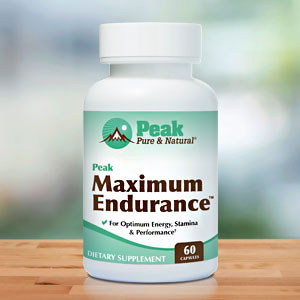Get Easy Health Digest™ in your inbox and don’t miss a thing when you subscribe today. Plus, get the free bonus report, Mother Nature’s Tips, Tricks and Remedies for Cholesterol, Blood Pressure & Blood Sugar as my way of saying welcome to the community!
Forget reading tea leaves: How poop predicts mortality

Anyone of us could become a patient in a hospital intensive care unit (ICU) — more easily than we think.
A severe injury like a car accident or a burn, a heart attack or stroke, or pneumonia is just a few of the ways you could land in the ICU.
Even the need for observation and monitoring after a complicated surgery could make you an ICU patient.
And statistically, the moment that happens, the more likely you are to die.
That’s because addressing the life-threatening conditions that arise in ICU patients has been a challenge.
That may be changing…
A new way to predict which critically ill patients are more likely to face a higher risk of death within the coming 30 days is a tool that could improve treatment and turn those odds to a higher rate of survival.
But the real chance of survival is up to you and starts way before you ever find yourself in an ICU…
A sign your ICU stay could end in 30 days
A team of doctors from the University of Chicago and the University of Amsterdam has created an index of markers in a patient’s feces that can help gauge their risk of mortality within 30 days.
Dr. Alexander de Porto and his team have named this index the Metabolic Dysbiosis Score, or MDS. It can potentially help ICU doctors work around a diagnostic challenge they often face.
You see, patients admitted to an ICU often develop sepsis.
Let’s say you’re fighting pneumonia, or a kidney infection. Sepsis happens when your immune system goes into overdrive and starts killing things it shouldn’t, triggering body-wide inflammation and a real risk of organ failure and death.
But not everyone who develops sepsis does so in the same way, which means that two patients with the same syndrome may respond to the same treatment very differently.
According to Dr. de Porto and his team of researchers, one approach is to target specific traits rather than treating “sepsis” as a whole.
Knowing that critically ill patients often have reduced diversity in their gut microbiota (bacteria in the gut), the trait they focused on was dysbiosis, an imbalance in the gut bacteria where harmful bacteria outnumber beneficial bacteria.
The researchers studied fecal samples collected from 196 patients exhibiting respiratory failure or shock, using them to develop the MDS, based on concentrations of 13 distinct fecal metabolites.
“The MDS performed well in predicting mortality in the training cohort of medical ICU patients, with 84 percent accuracy, 89 percent sensitivity, and 71 percent specificity,” the researchers said.
They also noted: “The metabolites comprising the score, such as short-chain fatty acids, bile acids, and tryptophan metabolites, point to biological pathways that might be targeted therapeutically …”
Potential interventions may include dietary modifications and the use of probiotics.
What does all this mean for you?
First and foremost, this data underscores the importance of maintaining a healthy and balanced gut microbiome as a primary defense against serious illnesses.
For example, the MDS linked an underproduction of short-chain fatty acids (SCFAs) to a higher risk of mortality.
So where do you get SCFAs? SCFAs are produced by the “friendly” bacteria in your gut when you eat fiber — a critical nutrient that the majority of Americans do not get near enough of.
When the fiber you eat reaches your large intestine, it ferments and releases three types of short-chain fatty acids when broken down by gut microbes:
- Butyrate. A key energy source for cells lining the large intestine, butyrate may play a role in mitigating inflammation and supporting immune function.
- Propionate. Besides preventing constipation, propionate supports brain health and may protect against neurodegenerative diseases like Parkinson’s.
- Acetate. Not to be confused with the plastic chemical found in products like paint and packaging, the presence or absence of the SCFA acetate affects gene expression, metabolic regulation and enzyme activity.
The following fiber types can help you produce these valuable SCFAs:
Inulin – found in onions, leeks, wheat and asparagus.
Fructooligosaccharides (FOS) – also found in onions and asparagus, as well as in many other fruits and vegetables, especially bananas.
Pectin – good sources of pectin include apples, apricots, carrots and oranges.
Arabinoxylan – found in cereal grains, especially in wheat bran, making up about 70% of the total fiber content.
Hopefully, you won’t ever end up in an ICU, but if you do, you’ll want plenty of those SCFAs to help you get through it.
Editor’s note: Regain your health and enjoy a full, vibrant life by defeating the real culprits of premature aging and sickness — excessive, damaging acid in your body! The truth is when you’re alkaline, wellness thrives and sickness takes a dive. Click here to discover The Alkaline Secret to Ultimate Vitality!
Sources:
Something in Your Poop May Predict an Imminent Death — Science Alert
Fecal metabolite profiling identifies critically ill patients with increased 30-day mortality — Science Advances














